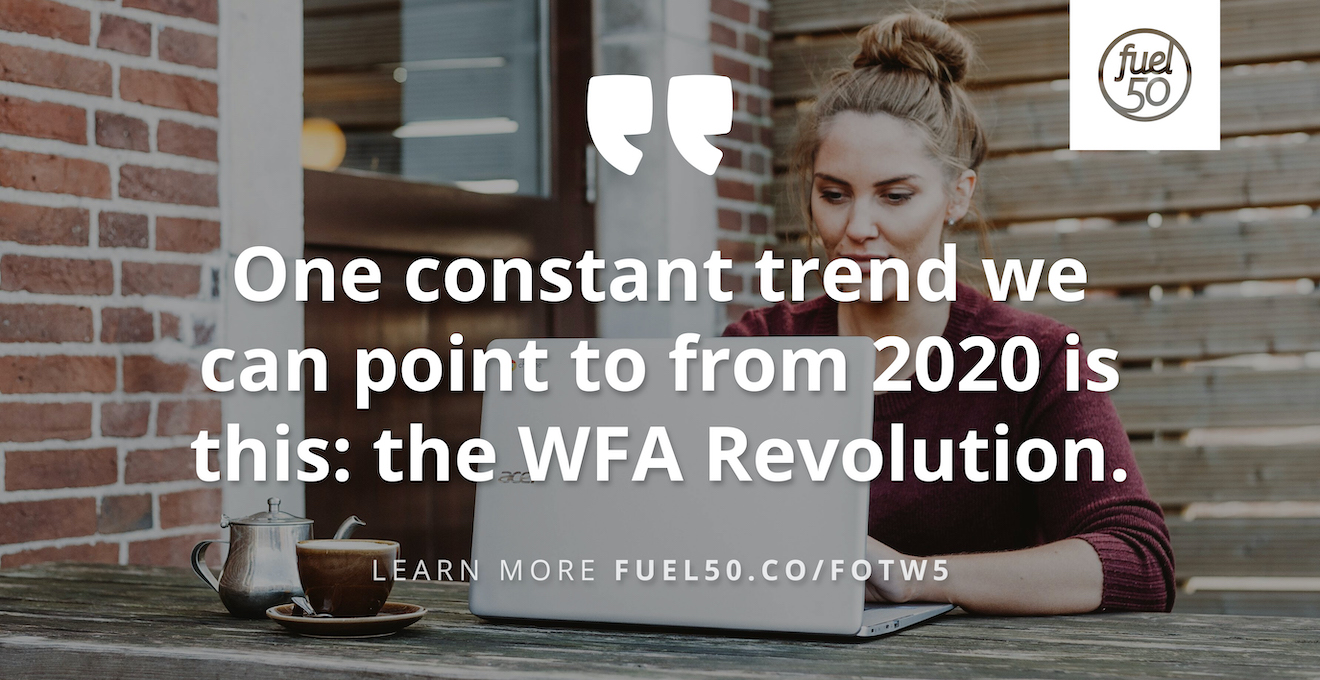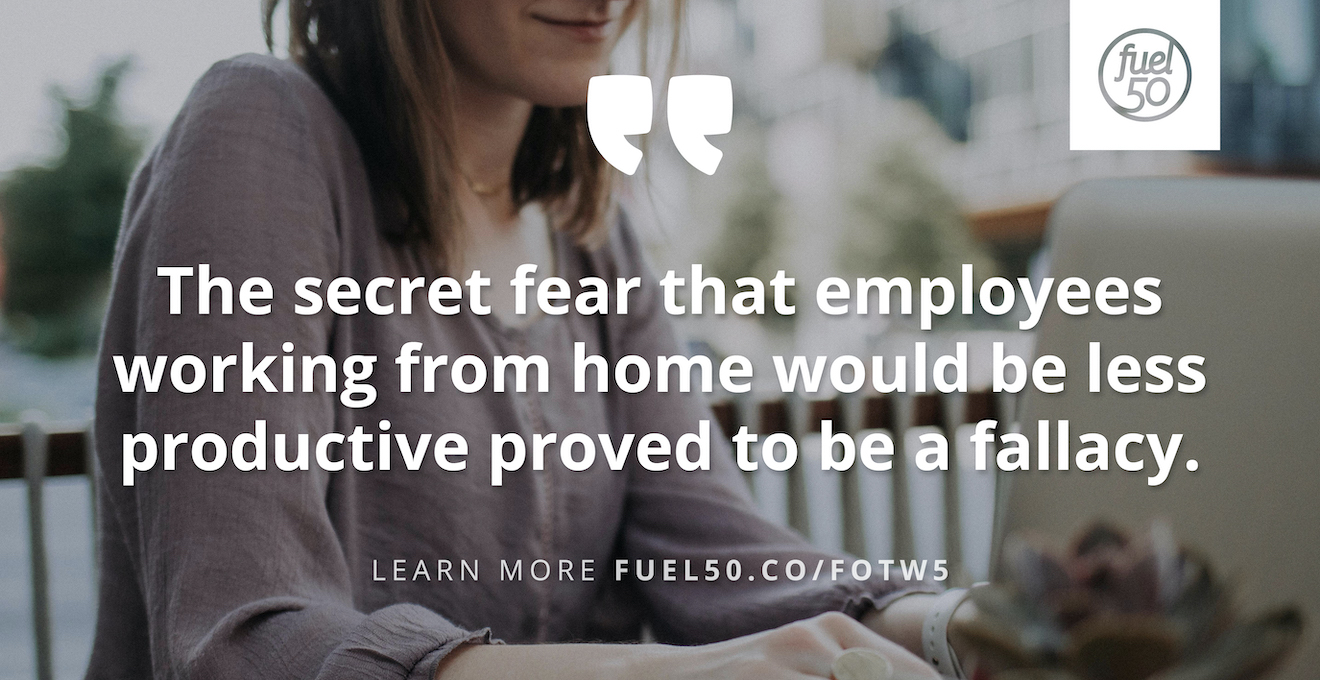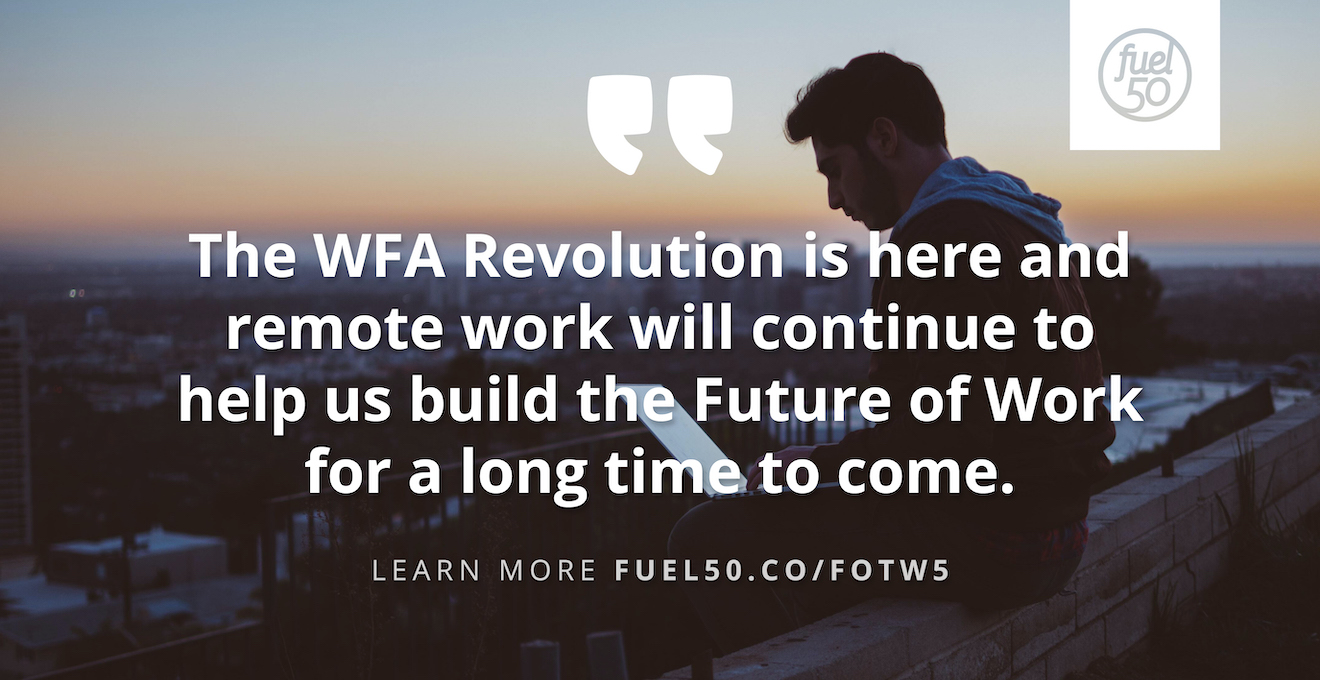It is tough to be a worker in today’s world.
We made this point just as the year was beginning and, if anything, it is even more true today than it was back in January 2020 — before anyone had really heard of coronavirus or Covid-19 and the world of work was, in comparison, a much simpler place.
It is worth revisiting what The Ford Foundation, an independent non-profit grant-making organization based in New York, wrote in the 2019 Future of Work(ers) report. They were able to give some warning on what we have all been coping with during 2020:
“The nature of work is changing — and at a magnitude that we have yet to fully grasp, let alone respond to. … New and emerging technologies — including artificial intelligence, robotics, and big data — are playing an increasingly important role in shaping the jobs of the future, by shifting jobs between sectors, transforming the kinds of tasks that are done in existing jobs, and changing how people connect to work. Traditional employment is beginning to look more and more like “gig” work, with unpredictable work schedules and more precarious working conditions and rewards.”
When you re-read that now, it is incredible how spot on their analysis is and how much it captures what workers everywhere are dealing with today.
The WFA Revolution
The Ford Foundation report touched on a lot of developing workplace trends. But, if there is one constant trend we can point to from 2020, one clear-cut change to not only the way we work but the Future of Work as we prepare for 2021, it is this: the WFA Revolution.
Don’t know what WFA is? Well, the Harvard Business Review explained it in a December 2020 article titled Our Work-From-Anywhere Future:
“Before 2020, a movement was brewing within knowledge-work organizations. Personal technology and digital connectivity had advanced so far and so fast that people had begun to ask, “Do we really need to be together, in an office, to do our work?”
We got our answer during the pandemic lockdowns. We learned that a great many of us don’t need to be with colleagues on-site to do our jobs. Individuals, teams, entire workforces, can perform well while being entirely distributed — and they have.
So now we face new questions: Are all-remote or majority-remote organizations the future of work? Is work from anywhere (WFA) here to stay?”
That is a GREAT question. We dug into that earlier this year in The Future of Work Is Remote Work, ”When you talk about the Future of Workers (and the Future of Work), one thing is clear: In the 21st Century, remote work is going to be the ‘new normal’ for a great many workers.”

However, what we know now is that remote work has succeeded, for the most part, because employees not only embraced it but showed that they could excel even though they were working by themselves and no longer in a traditional office environment.
Anna Convery-Pelletier, the CMO at Radware, recently wrote about her organization’s 2020 experience with employees suddenly working from home. The big surprise? It was that her workforce suddenly became more productive when they moved off-site.
Here’s how she explained it in Forbes:
“The secret fear that employees working from home would be less productive proved to be a fallacy. In fact, according to my company’s recent global survey of 260 senior executives, C-suite executives revealed that remote workers significantly improved their productivity since working remotely. Increased efficiency may be attributed to not commuting, minimized workplace distractions, and more freedom to work during the hours that are best for each individual.”
More Mobile, More Agile, More Flexible
It is not just that more people are working remotely, but in the process of going remote, they are all expected to be more mobile, more agile, and more flexible as well.
That is what happens when workers are required to radically change the circumstances of their work at a moment’s notice; working outside the natural support system that an office or regular workplace provides pretty much demands that employees also become their own virtual support system. There is no longer an IT department, or HR people, or even fellow employees in the next cube that you can pop in and get to help you anymore.
Of course, all those support people still exist, for the most part, and you can track them down for help, but in a great many circumstances, you are going to send out a call for help and then have to be prepared to fend for yourself until the virtual Cavalry arrives.

The Microsoft Research blog explained this phenomenon recently in a post that was aptly titled The Future of Work, Unbound: 2020 and the Strange New Mobility of Work and Time. Here’s how they so elegantly put it:
“For those of us who have transitioned to working from home over the course of the last year, we must navigate a strange new manifestation of mobility.
Far-flung colleagues appear almost magically in a grid format on a screen right in front of our faces, despite their remote locations. Yet at the same time, a document, presentation, piece of content, or part of a running application already at our fingertips is awkward to share with others on the same video call.
It’s a paradoxical science fiction world where far is near, and the close-at-hand dilates impossibly beyond our reach. Perhaps these surreal distortions of time and space explain in part why “video-conferencing syndrome” feels so draining.
And even as we’re stranded within the confines of our improvised home offices, we’re somehow supposed to navigate this other-worldly place—a jumbled chaos terrain of home and work, personal and professional, private and semi-public.
Moving between these realities, sometimes moment by moment, makes us nimble in a way we’ve never experienced before: our activity is mobile even as we stay put in the same location. We work in the same physical spaces, but as we navigate these transitions, we’re not in the same human places.
While 2020 has accelerated this trend, perhaps it’s inevitable … {because) in many ways, this strange new mobility has been a long time coming.“
Nothing Can Replace Face-to-Face Communication
Many believe that this New World of Work, this WFA/Work-from-Anywhere Revolution, is less of a dramatic change and more of an adjustment to the chaotic circumstances that a worldwide pandemic and lockdown thrust upon us.
One of those who challenge the notion of remote work as the “new normal” is Washington Post columnist Helaine Olen. She feels that “telecommuting is not the future” and she also predicts that “the vast majority of cubicle slaves will return to the office when this is over …”
Her larger argument is that “there are serendipitous benefits to in-person collaboration that no number of Zoom meetings or Slack channel can replicate.” She says, for example, that companies like Bank of America and Yahoo believe that the overuse of such virtual communications is “detrimental to corporate teamwork.”
Although it is not unusual for opinion columnists to be contrarians as a matter of habit, Helaine Olen makes a compelling point when she says that nothing can replace face-to-face communication. She is right about that, and it is likely that how we work remotely will evolve to come to grips with the reality that you cannot simply communicate with technology all the time. Sometimes, you need a bit of human contact.
The Future of the Worker
If we have learned just one thing about the Future of the Worker during the tumultuous year of 2020, it’s this… The future will belong to those who are flexible, agile, and resilient.
Remote work raises a vast array of issues and challenges for employees and their employers. Companies are pondering how best to deliver coaching remotely and how to configure workspaces to enhance employee safety, among a host of other thorny questions raised by COVID-19. Meanwhile, employees are struggling to find the best home-work-life balance and equip themselves for working and collaborating remotely.

Like it or not, the WFA Revolution is here. Remote work will continue to help us build the Future of Work for a long time to come. Of course, we still need to figure out the face-to-face issues and how to build organizational culture when so many people are working apart, but like so many things that have changed during 2020, we will likely find a way to resolve those challenges, too.
As one of the many consultants over at McKinsey recently asked, “How long before someone invents the virtual watercooler?“
That is a great question… and one best left for 2021.
Why Internal Talent Mobility Needs to be Top of Mind in 2021
Watch the webinar featuring three world-leading analysts — Jason Averbook and Jim Holincheck of Leapgen and Anne Fulton of Fuel50. An action-packed discussion on how to provide a people-first workforce experience, the need for talent enablement rather than talent management, and the differences between a talent marketplace vs. an opportunity marketplace. Tune in to learn more about how to achieve internal talent mobility to future-proof your workforce and ensure that your organization is agile-ready.







